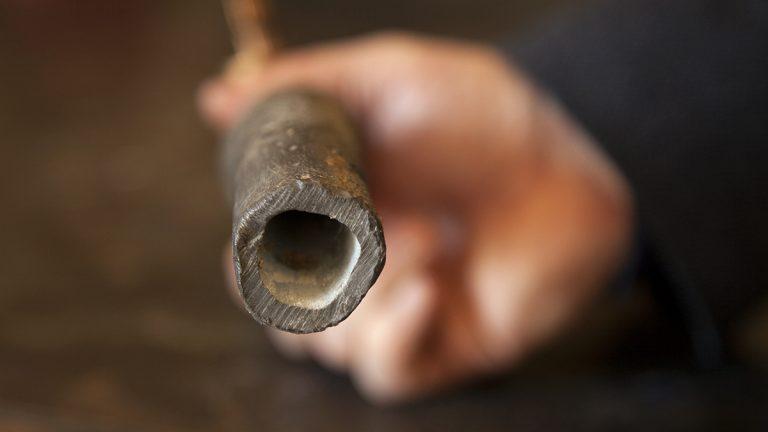What We Do About Lead: Water Treatment

One of several actions we take to keep your drinking water safe and protect you and your family from the risk of lead in water is optimizing our water chemistry to minimize corrosion of pipes and plumbing.
Add Orthophosphate
Drinking water is lead-free when it leaves our treatment plants, but tap water can pick up lead from lead service lines, lead plumbing, and old fixtures. We add a food-grade chemical called orthophosphate during the water treatment process that minimizes the chances of this happening.
Orthophosphate forms a protective coating inside metal service lines and water pipes that prevents water from coming in direct contact with the pipe material, reducing the likelihood of lead dissolving into the water.
We've been adding orthophosphate since 1997. Testing shows that our orthophosphate treatment is very successful at reducing lead from leaching into drinking water. If the orthophosphate coating inside a lead service line or lead plumbing is disturbed and flakes off, the coating will reform.
The amount of orthophosphate added to water for your protection is very small – about 1 milligram per liter. By comparison, one liter of pop contains up to 1,000 times that amount.
Control pH
We also control corrosion by keeping the pH of water leaving our treatment plants above 7. Water that has a pH below 7 (on the pH scale of 0 to 14) is more acidic and therefore more likely to corrode metal.
The pH of water leaving our treatment plants is always above 7, usually between 7.3 and 7.6. Maintaining water pH in this range reduces corrosiveness and allows orthophosphate to form and maintain a solid coating, preventing lead and other metals from leaching into the water.
Our effective treatment techniques not only keep your water safe from any lead that may exist in your plumbing, but they also help extend the life of your plumbing.
